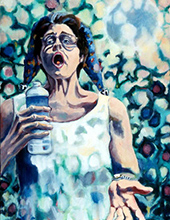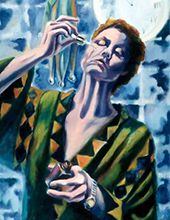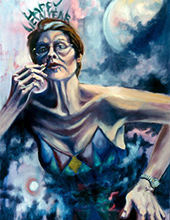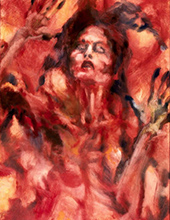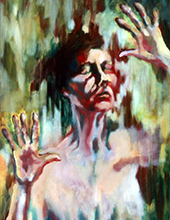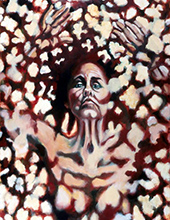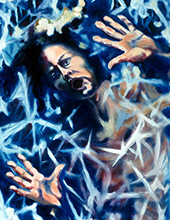Fool's Paradise
Archetypes and symbols
illustrate the universality of the human experience. I am interested in the
Tarot because it presents a rich source of symbolic imagery and inspires the
user to self-examination.
For several years, I experimented with the themes of aging and denial and
focused on the ways we fool ourselves into thinking we can turn back the hands
of time. For example, we spend more than we should on products that promise to
“reverse the aging process,” and although we may laugh at our own tendency to be
so duped, we continue to buy and use these products. Beneath the surface of this
denial is simple vanity. Deeper still is something much more primal: the fear of
death.
For me, the perfect marriage of the Tarot and the denial of the aging process
found its expression in a series of portraits of the Fool as a middle-aged
woman. In the Tarot, The Fool represents folly and indiscretion, but s/he also
represents a simple and childlike faith. Some scholars believe the Fool has
found its way into our modern playing card deck as the Joker. In her book Jung
and Tarot: An Archetypal Journey, Sallie Nichols writes, “The Joker connects two
worlds – the everyday, contemporary world where most of us live most of the time
and the nonverbal land of imagination….he can connect the modern ‘games people
play’ with the archetypal world of the ancestors.”

